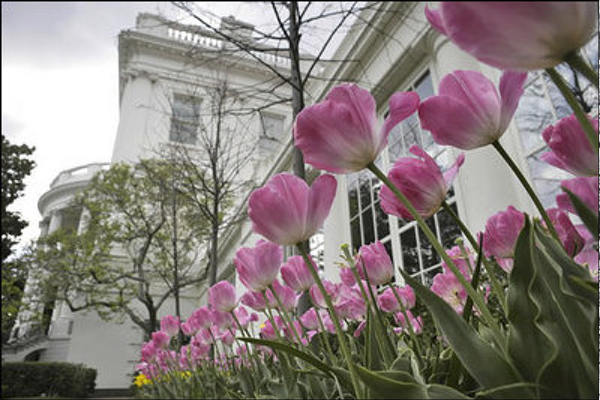Make Digital History a National Common Ground

When I was in eighth grade, I traveled with my classmates to Washington, D.C. for the first time. I marveled at the amount of American history that happened in the iconic buildings of our nation’s capital. Perhaps the most notable of these buildings is the White House, an enduring symbol of democracy.
From the North Lawn, I saw the same driveway that foreign leaders use when arriving for state dinners. I saw the lush green South Lawn that Marine One uses to touch down. The Rose Garden, where President Kennedy greeted astronauts back from the first human space flight, is secluded in the trees, next to the Oval Office. Lafayette Square, a public space where generations of activists and ordinary citizens alike have demonstrated for a myriad of causes, sits in front as a gathering space for onlookers. As I arrive at the Decatur House for work now, I often wonder if I noticed this brick building on the Square those many years ago.
For many students who are fortunate enough to make the trip to Washington, this can be the first step in a lifelong journey of learning. It certainly was for me. So it’s no wonder that for generations, teachers have brought their students to see the White House for themselves. But for all those who come down from Pennsylvania Avenue, there are many more who can’t make the trip because of distance or cost and, this year, because of COVID-19.
No one should be at a disadvantage because they can’t visit D.C., or other historical landmarks like Presidential homes and libraries. We can take advantage of our increased dependence on online learning to inspire students, no matter where they live. This is why we’ve brought so many of these resources to our website and even built an app that can take you on a virtual tour of the president’s home. Other institutions popular with tourists, including the Smithsonian Museums and Monticello, are offering virtual tours. The Kennedy Center is offering inspiring performances on their digital stage. Resources like these have the ability to send students on new journeys to faraway places or gain an understanding of times long ago. It certainly won’t be the same as seeing historic landmarks in person, but instead of only visiting one or two sites, the options are nearly unlimited.
In historic times such as these, when the country is facing economic strife and the consequences of ongoing racial injustice, learning about how the American people have overcome obstacles and how our country has and continues to transform over the years, can provide hope and guidance for the future. These lessons may help students put the daily events they are seeing on the news and in their communities in a context they can more easily understand. For instance, how did our country survive the Spanish Flu of a century ago or what innovations and ideas came out of the Great Recession that we still rely upon today? We can also look to past protests on Lafayette Square to ask how they have impacted the course of history, from the 19th Amendment that gave white women the right to vote to ending the Vietnam War. There’s no doubt that future students will look toward the current moment and ask themselves similar questions.
I think about how meaningful that first visit to Washington was, and how it sparked a passion for history that has defined my career. And while many will not be able to travel from their own house to the People’s House soon, I hope our resources provide students with the same inspiration I had as a young visitor to DC. Our history is our common ground and it continues to shape our collective future.